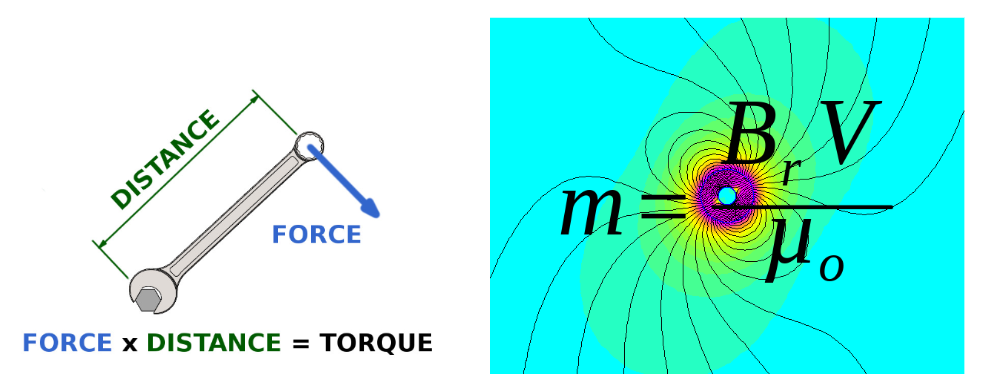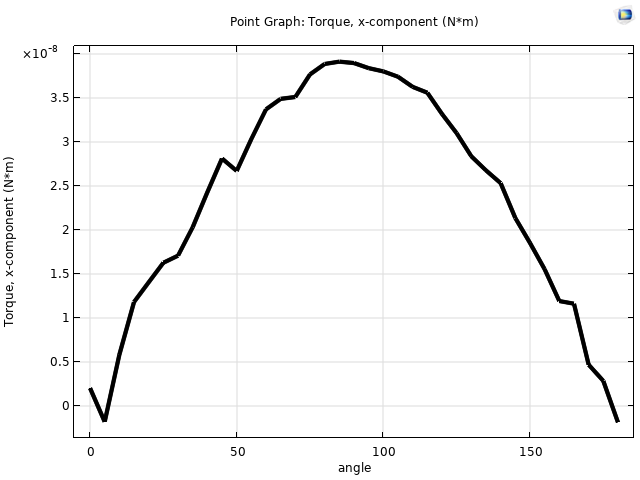Calculating the Torque of a Magnet

Featured above is a current conducting wire with a magnet above it modeled in Comsol. The wire lies along the y axis and creates a magnetic field in the z axis. The magnet then creates a torque to align its poles with the magnetic field. It has the largest torque when orthogonal to the field and the lowest when aligned with the field (T= m(B)(sinΘ)). This torque can be calculated using the magnetic dipole moment (m). The magnetic dipole moment, m(A m2), is the magnet’s Residual Flux Density, Br (T), multiplied by the magnet’s volume, V (m3), over the magnetic permeability of free space, μo (T m / A).
μ= permeability for a vacuum= 1.2566E-6
B field = 1.0079E-4
V=(0.01)(0.01)(0.1)m3
Br = 5E-5

Using Comsol, we are able to graph this torque and compare it to our calculated value.

As seen above, the torque takes the shape of a sine wave with the maximum being when the magnet is at a 90 degree angle, or is orthogonal to the magnetic field. The maximum of 3.8E-8 also matches our calculated value which confirms the model is accurate.
Comsol model: Torque of a Magnet